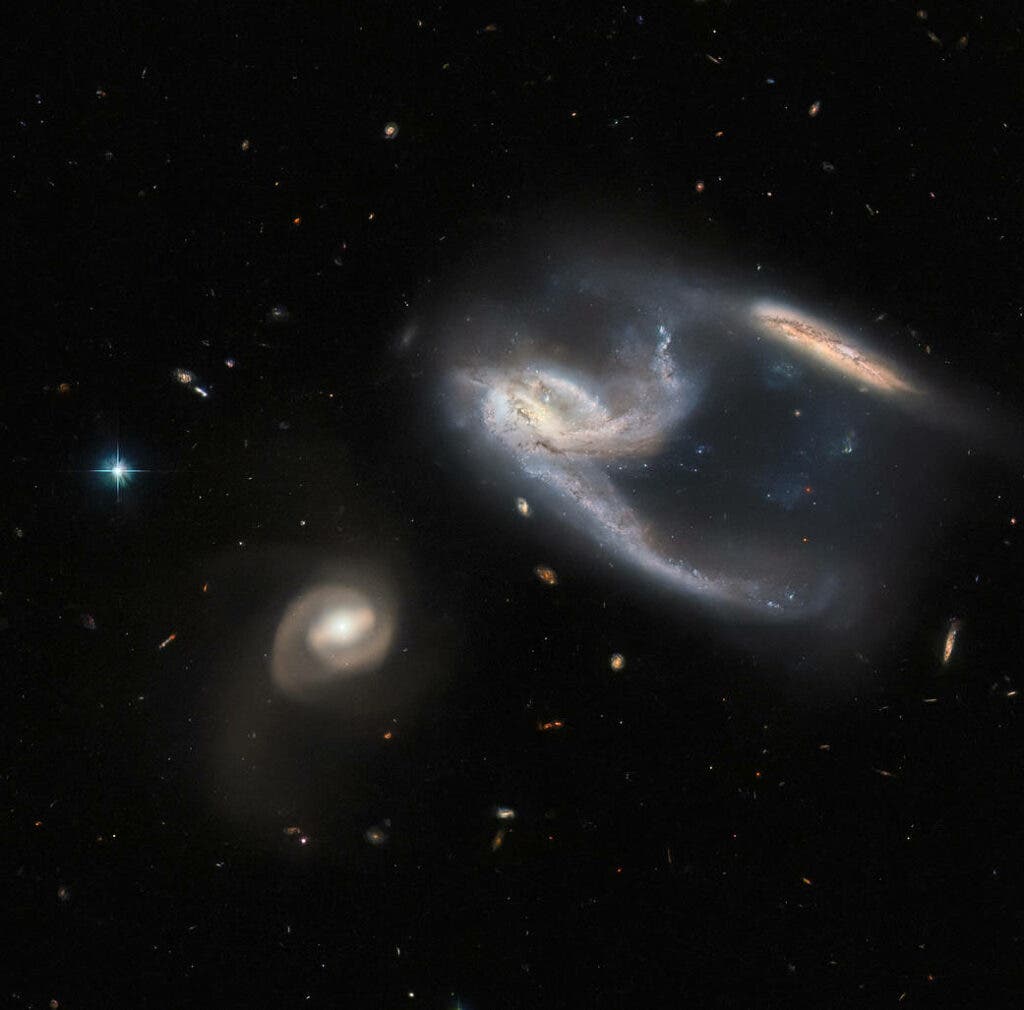The two galaxies in the upper-right part of the image seem to be interacting with each other — potentially even merging.

NGC 7764A lies some 425 million light-years from Earth, in the constellation Phoenix, first described 400 years ago, on a celestial atlas called Uranometria. Although it’s so far away, Hubble was able to snap this image using both its Advanced Camera for Surveys (installed in 2002) and Wide Field Camera 3 (the most technologically advanced visible-light camera on Hubble, installed in 2009). Both are advanced systems designed to capture images deep in space.
The two right-side galaxies appear to be dancing around each other — a dance that is also potentially affected by the bowling-ball shaped galaxy on the right side of the picture. It’s not uncommon for galaxies to interact and even collide, although this process happens very slowly, and is not technically a collision (since galaxies have more empty space than stars and planets), but rather gravitational interactions between the components that make up the two galaxies. Colliding may cause the two galaxies to merge, if they don’t have enough momentum to continue traveling after the collision. When this happens, the two galaxies eventually fall back on each other and merge into one galaxy. When galaxies just pass through each other without merging, they mostly retain their material and overall shape.
It’s not clear which of these processes is going on here, or if there’s another process altogether — although a head-on collision appears unlikely. As NASA explains, the galaxy in the lower left may also be involved, given that it is relatively close. The European Space Agency (ESA) also seems pretty stoked about the shape the two galaxies are making as they interact.
“By happy coincidence, the collective interaction between these galaxies has caused the two on the upper right to form a shape, which from our solar system’s perspective, resembles the starship known as the USS Enterprise from Star Trek,” an ESA text notes.
The space agency also points out just how clunky the naming of these galaxies is. The three galaxies are called NGC 7764A1, NGC 7764A2, and NGC 7764A3, respectively. Astronomers need these complex but specific names to make sure they know exactly what object they’re talking about and prevent any confusion.
“This rather haphazard naming makes more sense when we consider that many astronomical catalogs were compiled well over 100 years ago, long before modern technology made standardizing scientific terminology much easier,” the article adds.
“As it is, many astronomical objects have several different names, or might have names that are so similar to other objects’ names that they cause confusion.”






